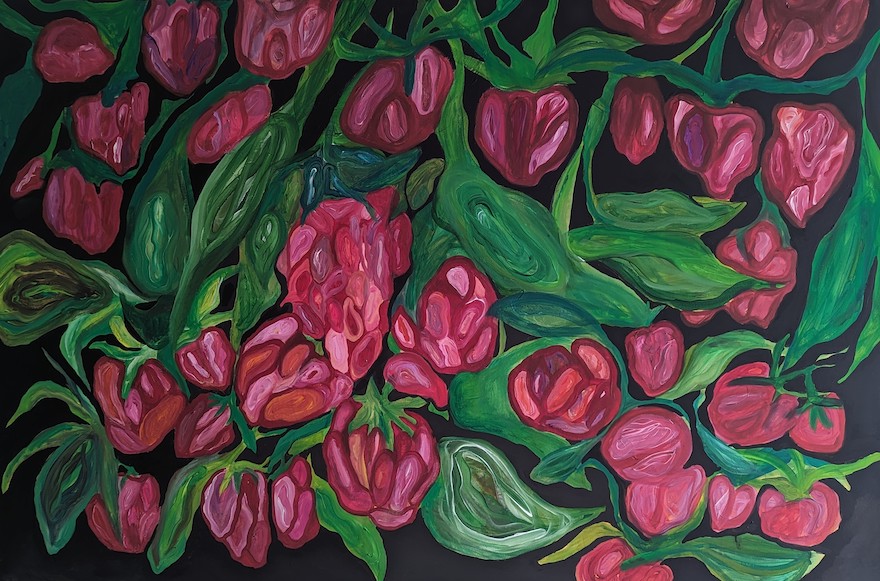Carleigh Candice Mignonne Milburn
Carleigh Candice Mignonne Milburn is a member of the Métis Nation of Ontario and has expertise in art education, Indigenous studies, and artificial intelligence. As an Indigenous woman, artist, and Ph.D. candidate (ABD) in Cultural Studies, Carleigh holds certifications in Intermediate and Senior Divisions of Visual Arts, First Nations, Métis, and Inuit Studies, as well as Geography and History with the Ministry of Education of Ontario. With a Master's in Global Development and a Bachelor of Education and Arts with a specialization in Indigenous education, she consistently showcases excellence in delivering enriching learning experiences. Her dedication to the convergence of artistic expression and Indigenous art education is evident in her ongoing commitment to educational avenues.
Carleigh’s work has been recognized by the Ontario Graduate School for two consecutive years, and she earned the Project Dean Award for innovative projects. She was also awarded the esteemed Indigenous Art Fellowship for Aboriginal and Torres Strait Islander Peoples for her work on the processes of repatriation and rematriation in partnership with the Agnes Etherington Art Centre. Carleigh’s work received the Social Sciences and Humanities Research Council (SSHRC) grant in 2023 for her current project, Making Sense of Decolonization: Through Artificial Intelligence, Digital, and Conventional Art Creation.
Carleigh currently teaches "Indigenous Ways of Knowing: Exploring Indigenous Visual Storytelling and Digital Artmaking for Gender-Diverse Narratives" at Queen's University as a teaching fellow. She has designed courses for the Faculty of Education related to the dance curriculum for the Indigenous community-based stream and teaches at the Kingston School of Art. Additionally, she contributes to the Lifesaving Society Canada as a Trainer, focusing on teaching courses and writing curricula for the organization.
Dedicated to Indigenization, equity, diversity, inclusion, anti-racism, and accessibility, Carleigh founded Modern Métis Woman (MMW) in 2017. MMW is a registered non-profit charity that provides scholarships to Métis women across so-called Canada. Carleigh is also a project manager for an additional SSHRC-funded project, Carleigh collaborates with Dr. Lindsay Morcom, focusing on youth, digital art media tools, and VR technology to better understand the desires of Indigenous youth in their education.
Beyond supporting emerging artists, her proficiency in curatorial work is evident through her involvement in various exhibitions and projects promoting Indigenous art and culture. Carleigh has worked on several projects with the Agnes Etherington Art Centre, including her curatorial work on "Collection Care,” working with Norval Morrisseau’s works, and her involvement in "Lii Zoot Tayor: Other Worlds," an exhibition featuring Métis artists, where she assisted in co-creating a school program and teacher resources.

THANKS AND ACKNOWLEDGEMENTS
From the artist:
This project acknowledges its connection to Ka’tarohkwi (“a place where there is clay” or “a place where there is limestone”), located on the territories of the Anishinaabek, Haudenosaunee, and Huron-Wendat peoples, and also a gathering place for many members of the Métis nation. This acknowledgment is dynamic and evolving as we, as a community, continue to uncover previously suppressed or unrecognized information. Our understanding deepens through ongoing engagement with historical records, lived experiences, and community wisdom, as well as through our interactions with this land, both physically and digitally.
“Miigwech” – to thank, to give back, to return the favour, to find ourselves occupying these spaces and places. To those who participated in this project, to those who supported its development, to those who got their hands dirty – putting the nails in the wall, beading, to those who spent hours painting, to those cutting the fabric, sewing, to the art, to the technology, to our plant medicines, our elders, to the inspiration, to the silence, to those who stood with the sculpture, to the hours spent thinking about the land and the people, to our ancestors and memories, to the ones trying to make sense of decolonization - to what it looks like, feels like, sounds like, smells like, to those I inspire to know, and to the aspiration for our future selves, to the relationships I occupy and don't yet understand, to the universe supplying the right now, the not now, and the unknown – Miigwech.
